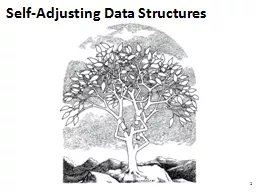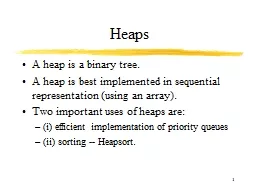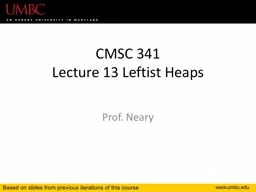PPT-1 Priority Queues (Heaps)
Author : celsa-spraggs | Published Date : 2018-03-14
Sections 61 to 65 2 Priority Queues Regular queue supports First In First Out Enqueue add a new element Dequeue remove oldest element in queue Data structure
Presentation Embed Code
Download Presentation
Download Presentation The PPT/PDF document "1 Priority Queues (Heaps)" is the property of its rightful owner. Permission is granted to download and print the materials on this website for personal, non-commercial use only, and to display it on your personal computer provided you do not modify the materials and that you retain all copyright notices contained in the materials. By downloading content from our website, you accept the terms of this agreement.
1 Priority Queues (Heaps): Transcript
Download Rules Of Document
"1 Priority Queues (Heaps)"The content belongs to its owner. You may download and print it for personal use, without modification, and keep all copyright notices. By downloading, you agree to these terms.
Related Documents














